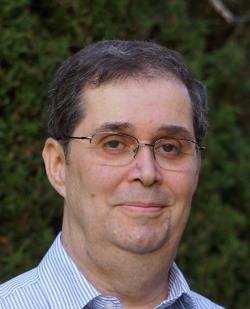
Dr. Jeremy Everard
Department of Electronic Engineering, University of York, Heslington, York, UK.
Monday, September 17, 2018
4:00PM – 5:00PM – HEC 113
Abstract
Oscillators are used in almost all consumer and professional electronic systems and the phase noise and jitter set the ultimate performance limit in navigation, communications, control and RADAR systems.
This talk will initially discuss the theory and design of a wide variety of oscillators offering the very best performance. Key features of oscillators offering the lowest phase noise available will be shown, for example: a 1.25GHz DRO produces -173dBc/Hz at 10kHz offset and a noise floor of -186dB and a 10 MHz crystal oscillator shows -123dBc/Hz at 1Hz and -149 at 10Hz.
New compact atomic clocks with ultra-low phase noise microwave synthesiser chains (with micro Hz resolution) will also be briefly described to demonstrate how the long-term stability can be improved.
New printed resonators (and thereby filters) demonstrate Qs exceeding 540 at 5GHz on PCBs and > 80 at 21GHz on GaAs MMICs. These resonators produce near zero radiation loss and therefore require no screening. L band 3D printed resonators demonstrate high Q (> 200) by selecting the standing wave pattern to ensure zero current through the via-hole and new ultra-compact versions (4mm x 4mm) have been developed for use inside or underneath the package. Alumina based resonators demonstrating Qs >200,000 at X band have also been produced. Tuneable versions (1%) have recently been developed.
The next generation of oscillators will offer orders of magnitude improvement in performance. Our current attempts to do this will be described.
Biography
Jeremy Everard obtained his degrees from King’s College London and the University of Cambridge, UK in 1976 and 1983 respectively. He worked for six years in industry at GEC Marconi Research Laboratories, M/A-Com and Philips Research Laboratories on Radio and Microwave circuit design. At Philips he ran the Radio Transmitter Project Group.
He then taught at King’s College London for nine years and became full Professor of Electronics at the University of York in September 1993. He has taught analogue IC design, optoelectronics, filter design, Electromagnetism and RF & microwave circuit design. In September 2007, he was awarded a five-year research chair in Low Phase Noise Signal Generation sponsored by BAE Systems and the Royal Academy of Engineering.
In the RF/Microwave area his research interests include: The theory and design of low noise oscillators; flicker noise measurement and reduction high efficiency broadband amplifiers; high Q printed filters with low radiation loss and broadband negative group delay circuits. In Opto-electronics, research includes: All optical self-routing switches which route data-modulated laser beams according to the destination address encoded within the data signal, ultra-fast 3-wave opto-electronic detectors and mixers and distributed fibre optic temperature sensors.
Recent research involves the development of atomic clocks using coherent population trapping and ultra-low phase noise microwave flywheel oscillator synthesiser chains with micro Hz resolution.
He has published a book on ‘Fundamentals of RF Circuit Design with Low Noise Oscillators’ (Wiley).